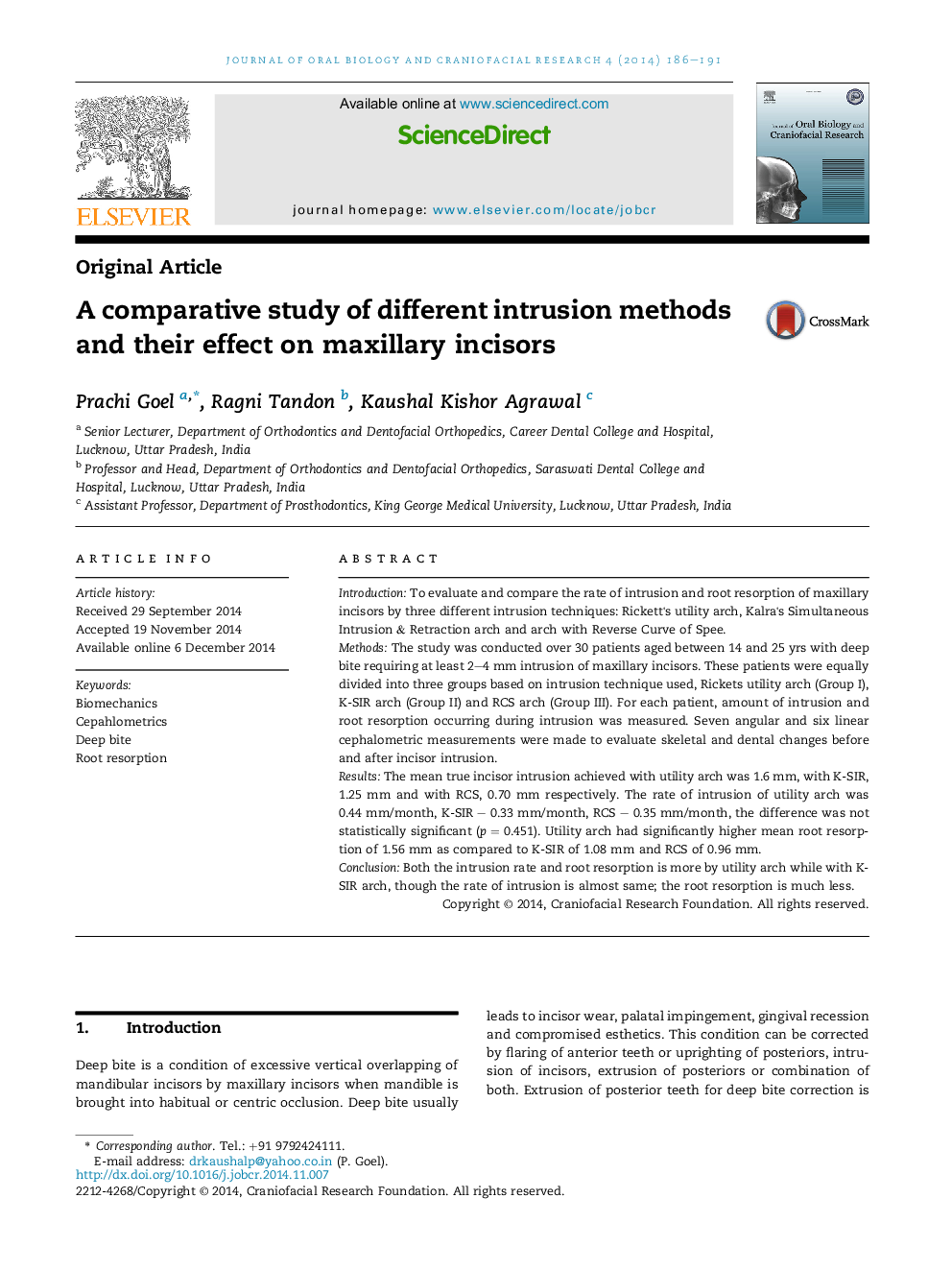| Article ID | Journal | Published Year | Pages | File Type |
|---|---|---|---|---|
| 3151964 | Journal of Oral Biology and Craniofacial Research | 2014 | 6 Pages |
IntroductionTo evaluate and compare the rate of intrusion and root resorption of maxillary incisors by three different intrusion techniques: Rickett's utility arch, Kalra's Simultaneous Intrusion & Retraction arch and arch with Reverse Curve of Spee.MethodsThe study was conducted over 30 patients aged between 14 and 25 yrs with deep bite requiring at least 2–4 mm intrusion of maxillary incisors. These patients were equally divided into three groups based on intrusion technique used, Rickets utility arch (Group I), K-SIR arch (Group II) and RCS arch (Group III). For each patient, amount of intrusion and root resorption occurring during intrusion was measured. Seven angular and six linear cephalometric measurements were made to evaluate skeletal and dental changes before and after incisor intrusion.ResultsThe mean true incisor intrusion achieved with utility arch was 1.6 mm, with K-SIR, 1.25 mm and with RCS, 0.70 mm respectively. The rate of intrusion of utility arch was 0.44 mm/month, K-SIR – 0.33 mm/month, RCS – 0.35 mm/month, the difference was not statistically significant (p = 0.451). Utility arch had significantly higher mean root resorption of 1.56 mm as compared to K-SIR of 1.08 mm and RCS of 0.96 mm.ConclusionBoth the intrusion rate and root resorption is more by utility arch while with K-SIR arch, though the rate of intrusion is almost same; the root resorption is much less.
